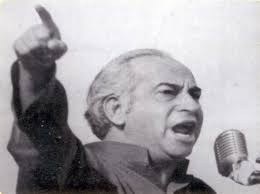Bangladesh, Pakistan trade luck
July 10, 2019
I FEEL GOOD about living to see this day. Bangladesh, whose creation I once opposed, is belying my forebodings about its future. It has surpassed Pakistan and, in some cases, the economic behemoth of India in economic development and well-being. Bangladeshi economic performance glows brighter when you compare that with the near-meltdown of the Pakistani economy.
Here’s how Bangladesh compares with Pakistan and India economically and socially, as shown by four key indicators. The first three are from the World Bank database, and the fourth from that of UNICEF.
Economic growth rates: Bangladesh – 7.9%; Pakistan – 5.4%; India – 7%.
Per capita income: Bangladesh – $1,700; Pakistan – $1,400; India – $2,000.
Life expectancy: Bangladesh – 73 years; Pakistan – 67 years; India – 69 years.
Literacy rate (15-24 years): Bangladesh – 73%; Pakistan – 56%; India – 69%.
First, a bit of the genesis of Bangladesh and Pakistan. In 1947 old Pakistan was carved out of two Muslim-majority slices of the Indian subcontinent, separated by 1600 miles of Hindu-majority India. East Pakistan, agrarian and flood-prone, was inhabited mostly by impoverished Bengalee Muslims. West Pakistan, especially its Punjab province, throbbed with industries and flourishing farms and was the locale of most of the country’s armed forces.
Bengalee Muslims had struggled onerously to create the “Muslim homeland” of Pakistan while the ethnically diverse Muslims of what became West Pakistan were opposed or indifferent to the Pakistan movement. The irony of ironies, 24 years after the creation of Pakistan, Bengalee Muslims in East Pakistan split Pakistan to make their eastern province independent Bangladesh. They had become fed up with army rule, economic exploitation and political suppression by West Pakistan’s mostly Punjabi military, feudal and political elites. Ever since Pakistan is what had been West Pakistan.
Bangladesh’s quite rapid economic progress and strides toward modernization have been an agreeable surprise to me because I had underestimated the progressive and creative potential of my fellow East Pakistanis. I believed that the relatively backward East Pakistan, with its stagnant economy, couldn’t survive, or at any rate would suffer, without the support of Pakistan’s western wing. In my column in the Pakistan Observer newspaper, published from Dhaka, now the Bangladeshi capital, I argue repeatedly that the “real task before us,” East Pakistanis, was to restore democracy in Pakistan, not dismember the country, which we had fought hard to create. East Pakistanis accounted for 56 percent of the Pakistani population, and I maintained that under a democratic system that would ensure free and fair elections, “we will rule Pakistan,” ending military rule and economic exploitation of the Punjabi clique.
On the morning of March 22, 1969, I was abducted at dagger-point from Dhaka by a dozen or so rowdy activists of the Bangladesh independence movement. My kidnappers called me a “Punjabi agent” and tormented me for my “filthy writings” against the Bangladeshi “national liberation.” They eventually let me go with the warning that if I dared to write “one more word” against their movement, my corpse would be “floating in the Burigunga,” the river snuggling Dhaka’s southern border.
I soon dropped my byline from my commentaries and the Observer’s publisher, Hamidul Huq Choudhury, arranged to send me out to work as the paper’s London bureau chief. I wasn’t surprised when I learned that I was among about 200 East Pakistanis who had become persona non grata in the newly independent Bangladesh. I immigrated to the United States as a political refugee.
From America I began to watch Bangladesh’s steady economic rise, after two decades of economic downturn, a famine and two military coups. It led first to my confusion and then soul searching and research. From my inquiries I realized that Bangladeshis’ innate spirit of enterprise and ingenuity, which I suspect party derives from their genetic inheritance, have been propelling their rapid rise. I was at once embarrassed and elated. Embarrassed because of my underrating Bangladeshis’ capabilities and opposing their independence struggle, and elated because of the accomplishments of my fellow natives of the new nation.
Bangladeshis are a hybrid racial strain, belonging to Indo-Aryan, Dravidian, Tibeto-Burman, Australoid other racial stocks. In 2014 I ran into two German researchers in Dhaka who were investigating the genetic components of Bengalee ethnicity in Bangladesh and the Indian state of West Bengal, also inhabited by Bengalees. Ninety-eight percent of Bangladeshis are ethnic Bengalees. Fritz von Meyer, from Lower Saxony, told me that the “very rich racial mixture” in their genome had made Bengalees more inquisitive and innovative than people with less variegated racial and ethnic genealogies. I realized that prolonged military-political suppression by the Punjabi-led West Pakistani elites had, partly, kept that ingenuity and creativity from flowering among Bengalees in East Pakistan.
Today I see the same deplorable drama playing out in what is left of Pakistan. I didn’t research the genetic or societal characteristics of Pakistan’s diverse ethnic communities, but Punjabis are known for their talent and enterprise, Pashtun for their indomitable courage and perseverance, Baloch for their vigorous spirit de corps and artistic aptitudes, and so on. If harnessed, these gifts of character and abilities could catapult Pakistan into high levels of progress and prosperity.
Yet Pakistan is facing the deepest crisis in its history. In April a Pakistani economist warned that his country had “reached the point of collapse.” Kaiser Bengali said, “The alarm bells are ringing. We have no choice but to beg. I fear starvation, poverty and unemployment.”
Prime Minister Imran Khan, once an internationally famed cricket star, came to power promising to create 10 million new jobs and 5 million new houses and revitalize the economy. Little did he know that the burden of running an impoverished country with domineering army generals looking over his shoulders is quite a bit heavier than running through the cricket field with leg pads, thigh guard, helmet and gloves.
Pakistan’s growth rate has plummeted to a nine-year low, to 4 percent; 35 percent of its population languishes below the poverty line. Yet curbs imposed by the IMF bars the government from launching public sector programs that could have alleviated the hardships of the poor. The IMF has given Pakistan $6 billion in loans to help stabilize the economy, imposing constraints on the government’s economic and financial policies. Meanwhile, prices of sugar, flour, electricity and most other essential commodities and services are rising unremittingly. On top of it, the Pakistani government has had to announce a sharp tax hike, also under IMF pressure, which, when presented before the parliament, drew angry shouts and howls. The country’s productivity, reflected in its export earnings, has dropped significantly. It’s telling to recall that as late as in 1992 Pakistan’s per capita real GDP, adjusted for purchasing power of the currency, was 65 percent higher than India’s. Today it’s 28% lower than that of its larger neighbor.
The rise of productivity, a fast rise, would be the key to restoring Pakistan’s economic health, and with it political and social advancement. But raising productivity requires a motivated manpower with animated hopes and aspirations. The problem is you can’t truly motivate people into doing anything consequential if it doesn’t enkindle their creativity and energy and offer them a stake in the outcome of their drudgery. It all calls for social and political freedoms, which Pakistan’s power-drunk military brass, landed aristocracy and government bureaucracy have resisted tooth and nail so far.
The military, in collaboration with the aristocracy and bureaucracy, has continually interrupted in the democratic process throughout Pakistan’s history. Imran Khan is Pakistan’s 19th elected prime minister. Thanks to military-bureaucratic interventions none of the 18 before him completed his or her five-year term in office. Khan is trying to do so by accepting the military tutelage – practically ceding foreign relations to the generals and clearing his key domestic programs with them. That’s not a recipe for economic recovery or growth, let alone promoting freedom and democracy in Pakistan.
As I said on other occasions, I’m an optimist who is waiting for the day Pakistanis say enough is enough. That day they will rise to beat their swashbuckling generals and colonels back into the barracks – as the Turks did in the wake of the aborted Turkish military coup in 1916 – and win their freedoms and their and their children’s’ future.
- Mustafa Malik is an international affairs commentator in Washington. He hosts this blog.
